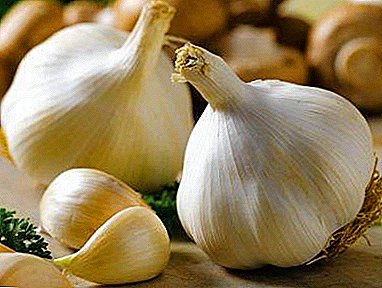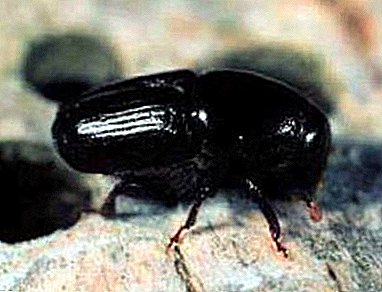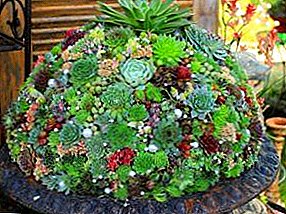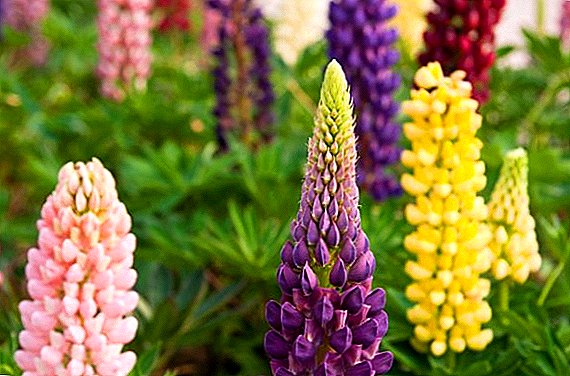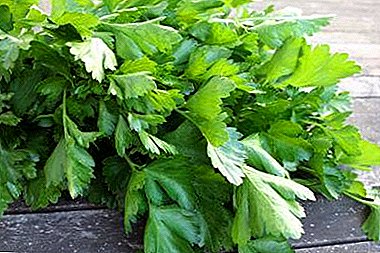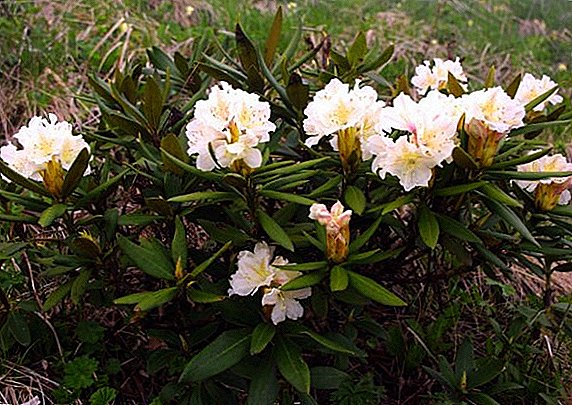 The decoration of the Caucasian mountains is a shrub of rhododendron. In the people, it is valuable not only for its beautiful appearance, but also for its healing properties. Infusions, decoctions, teas from plants help to overcome various ailments. In more detail about the properties of the shrub we describe below.
The decoration of the Caucasian mountains is a shrub of rhododendron. In the people, it is valuable not only for its beautiful appearance, but also for its healing properties. Infusions, decoctions, teas from plants help to overcome various ailments. In more detail about the properties of the shrub we describe below.
How it looks and where it grows
If you are in the Caucasus, you will see a green bush with a height of 1-1.5 m with white and yellow flowers gathered in umbrella inflorescences, you should know: you have a Caucasian rhododendron. The stem of the plant is recumbent, dark brown in color. The leaves are oval, elongated, on the back side of felt and red shade. In the middle of white-yellow flowers there are green or red blotches. The color of the corolla can vary from white to pale cream or pale pink.  Propagated by seeds. The Caucasian rhododendron is a typical representative of endemics, that is, it grows in a limited area. It can be found in the highlands of the Greater and Lesser Caucasus, in Turkey, behind the Arsian and Lazistan ridges, as well as in Dagestan, North Ossetia, Chechnya, Ingushetia, Kabardino-Balkaria and Karachay-Cherkessia.
Propagated by seeds. The Caucasian rhododendron is a typical representative of endemics, that is, it grows in a limited area. It can be found in the highlands of the Greater and Lesser Caucasus, in Turkey, behind the Arsian and Lazistan ridges, as well as in Dagestan, North Ossetia, Chechnya, Ingushetia, Kabardino-Balkaria and Karachay-Cherkessia.
Did you know? In 1803, the Caucasian rhododendron began to be used as a cultivated plant. But cultivating it is very difficult.
What is useful and what treats
The rhododendron contains:
- tannins;
- flavonoids;
- rhododendrin;
- glycosides;
- ericoline;
- gallic acid;
- tranida;
- ursuloic acid;
- arbutin;
- essential oils;
- Sahara;
- tannins;
- rutin;
- vitamin C.
 The listed components endow plants with such qualities:
The listed components endow plants with such qualities:
- bactericidal;
- antipyretic;
- soothing;
- fat burning;
- diuretic and diaphoretic.
Due to these qualities, the dried parts of the bush are actively used in the treatment of:
- cardiovascular problems;
- viral infections;
- rheumatism;
- obesity;
- colitis;
- vegetoneuroses;
- female infertility;
- inflammatory processes in the pelvic organs in women;
- to remove toxins and heavy elements;
- to strengthen the immune system.
Learn more about medicinal plants such as: meer, three-leaf watch, walker, onosma, creeping bitter, centaury, astragalus, bonfire, bedstraw, Lesopida, serpentine head, sedge, book, pike, yasnotka and Zubrovka.
Preparation of medical raw materials
For medicinal purposes, as a rule, use the leaves of the plant. Their preparation is carried out during flowering. It is possible to collect raw materials only from two-, three-year-old plants. Raw materials are dried indoors or under a canopy in the air so that the rays do not fall on it. It can be dried in the attic or in the oven at + 50-60 ° С. In order for the leaves to dry faster, they must be laid out in one layer and mixed from time to time. The finished raw material is stored in a tightly closed glass container in a cool and far from sunlight. Storage duration should not exceed two years. 
Did you know? The name rhododendron is derived from the merger of two Greek words: “rodonon” (rose) and “dendron” (tree).
Recipes of traditional medicine
From the leaves of rhododendron, infusions, decoctions, teas are prepared and used in the treatment of: fevers, epilepsy, headaches, insomnia, nervousness, rheumatism, gout, dysentery, colitis.
Tea
Recipe number 1. 20 g of dry foliage per cup of boiling water. Mix and insist for two hours. Accept 1 tbsp. l 5 times a day. Tea helps with sore throat. You need to drink it until you stop bothering the pain. You can gargle the same drink a couple of times a day.  Recipe number 2. 4 dry and 2 fresh leaves of rhododendron pour 200-250 ml of boiling water. We put on the fire and cook for 5 minutes, covered with a lid. For 5 minutes, remove from heat and add 200-250 ml of milk, then bring the mixture to a boil. Drink as usual tea. Optionally, you can add salt and pepper to the drink.
Recipe number 2. 4 dry and 2 fresh leaves of rhododendron pour 200-250 ml of boiling water. We put on the fire and cook for 5 minutes, covered with a lid. For 5 minutes, remove from heat and add 200-250 ml of milk, then bring the mixture to a boil. Drink as usual tea. Optionally, you can add salt and pepper to the drink.
Tincture
Recipe. 20 g of dry crushed leaves and rhododendron flowers pour a glass of vodka. Leave for 14 days in a dark place to insist. Then we filter and take 25 drops diluted in a small amount of water three times a day. Duration of treatment: a month or two. Used with increased pressure, heart pain.
Important! This tincture can be taken not longer than two months, but not less than one.
Decoction
Recipe. 1 tsp dry foliage to boil in a liter of water for 5 minutes. After removing from the heat, stand for half an hour and put in the refrigerator. It is necessary to drink warm 1/3 cup three times a day. It helps with nervous disorders, as a sedative, with osteochondrosis. 
Infusion
Recipe number 1. 1 tsp crushed dry leaves of rhododendron bred in a glass of boiling water. Leave to cool and brew. Strain, use 1 tbsp. l three times a day. Use for insomnia, headaches, with nervousness, convulsions.
Recipe number 2. 2 g of crushed dry leaves bred in a glass of boiling water. Leave to insist in a thermos for two hours. Strain, use 1 tbsp. l 2-3 times a day. Used for heart problems. In case of gastric problems, this infusion is taken in a dosage of 20-30 drops two or three times a day after meals.
Make an infusion of rose hips.
Can I eat pregnant
Andromedotoxin, which is part of the plant, is poison. Once in a weakened female body, it can cause a lot of harm to both the unborn child and the expectant mother. May also affect the reproductive function of women. 
Important! Do not take drugs based on rhododendron and during lactation.
Contraindications and side effects
In addition to pregnant and lactating, the plant is contraindicated for allergies and people with tissue necrosis. If you self-medicate and exceed the dosage, the likelihood of poisoning is high. First, the amount of saliva produced increases, excessive sweating begins, dizziness, nausea, vomiting, weakness, pressure drops, and convulsions appear.
Do not use pregnant purslane, red onions and pomegranates.
With a strong poisoning, a person loses coordination, the heart rate is disturbed, muscular weakness increases. Caucasian rhododendron helps with many ailments. But, like any medicine, it can be taken only after consulting a doctor. After all, each person needs an individual dosage and course of treatment that only the attending physician can know, based on the history of your illness.


